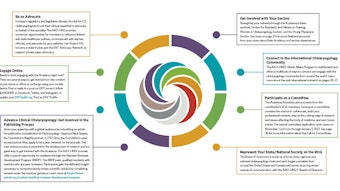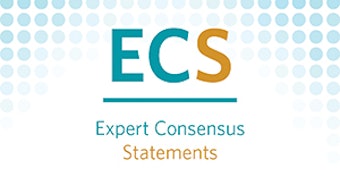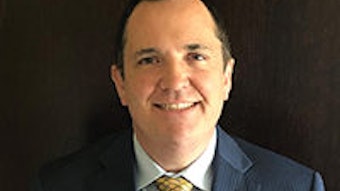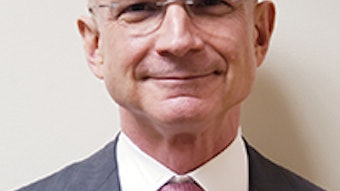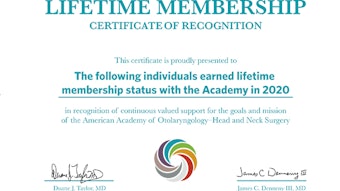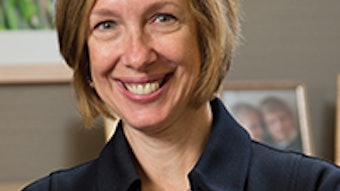Out of Committee: Media and Public Relations; Building an Online Presence: A Primer for Otolaryngologists
The online presence of physicians has become an area of controversy. Following the now-retracted article, “Prevalence of Unprofessional Social Media Content Among Young Vascular Surgeons,” published in the Journal of Vascular Surgery, thousands of physicians took to social media as an outlet to express views on the very topic of social media and its role in the medical profession.
Kara D. Meister, MD, Inna A. Husain, MD, and Philip G. Chen, MD, Chair, For the Media and Public Relations Committee

The online presence of physicians has become an area of controversy. Following the now-retracted article, “Prevalence of Unprofessional Social Media Content Among Young Vascular Surgeons,” published in the Journal of Vascular Surgery, thousands of physicians took to social media as an outlet to express views on the very topic of social media and its role in the medical profession. This online dialogue confirms that in modern medicine, social media and online presence are very real.
Physicians have differing reasons to publicly display their professional or personal lives—to connect, relate, advertise, advocate, and educate—or as a pastime. However, one must be cognizant of the immediacy, rapid dissemination, and permanence of posted content. A physician’s digital footprint exists to some degree even without the consent of the physician. Engaging in one’s online presence may be the most productive way to control the narrative and define the specific reason or agenda. The following nine questions will help guide otolaryngologists in enhancing a digital footprint.

Resources for You and Your Practice: Leveraging Digital Marketing to Elevate Your Practice
The AAO-HNS staff developed this resource for members that summarizes key tips and best practices to help you leverage social media and your website to increase your potential digital reach. View a portion of this document on pages 30-31 of this issue. You can also download the full primer at https://www.entnet.org/sites/default/files/digitalmarketing_bulletin_v3.pdf.
Are Social Media and Online Presence the Same Thing?
Not exactly. Online presence refers to any internet-based mention of a physician or the practice. These can be driven by the physician or independently. Examples of physician-driven instances include academic or institutional profiles, various social media outlets, personal professional websites (commercial or educational), etc. In a recent survey of orthopedic surgeons, 94.3% reported an online presence, and 84.1% had professional social media accounts.1 Examples of activities not driven by physicians include commercial physician review sites (e.g., Vitals.com), comments in patient groups, or comments on patients’ websites or social media accounts.
Is Online Presence Important to Patients?
Patients are increasingly turning online for information about their healthcare. According to a 2020 Software Advice survey, 90% of respondents use online reviews to evaluate physicians.2 Further, internet usage influences the choice of a physician in nearly 40% of those surveyed. Patients may review professional qualifications, research interests, or other reviews prior to an initial appointment. Some data suggests that by providing this background information, patient satisfaction and shared decision-making may be increased.3,4 In a sense, it is an extension of the visit.
How Often Should I “Google” Myself?
Monitoring patient reviews and content produced by search engines should be done frequently, even monthly, for those with an active online presence. In addition, vigilance around the time of practice transitions, such as starting a new job or changing office locations, is important to ensure accurate contact information. Searching one’s own name can provide insights about the practice, staff, or institution. It is easy for a doctor to take these comments personally, which can be emotionally draining. Online reputation management firms lessen the time commitment and the nonclinical burden this work may add.
If a Comment Appearing Online Is Inaccurate, How Can I Address That Content?
A patient has the right to express opinions. Defamation or claims of false facts, unfortunately, are difficult to prove.5 The best approach to rebuff inaccurate comments is to file an inquiry with the individual website. Many commercial review websites also have help centers that offer advice for responding to patient reviews. In general, it is recommended to respond to all surveys (both negative and positive), be appreciative and factual, and avoid emotional responses. Remember, you cannot respond directly to a patient with any detail of the medical encounter as that may imply a physician-patient relationship and would potentially constitute a violation of patient privacy. Hiring help is reasonable and not taking comments personally is a must.
How Can a Physician Best Use the Internet for Education Content?
According to internal Google data, one in 20 searches are health-related and 43% of patients report they rely on the internet as a primary source of medical information. Professional websites and accounts can be a great source of health information.6 Studies suggest patients trust information obtained from physician websites more than other sources, highlighting the potential benefits of physician-generated education content.7 Some hospitals have physician social media officers to encourage use of social media platforms for patient education and connection. Offering individual patient treatment or medical advice should be avoided. However, maintaining up-to-date and accurate information is time consuming, and the AAO-HNSF’s patient health website, ENThealth.org, has a substantial amount of excellent information for patients.
Is Maintaining an Online Presence Only Important for Private Practice Physicians?
Not at all. While private practice physicians are more likely to have individual professional websites, many academic or group-practice organizations benefit from active online engagement. Because there is wide variability in institutional policy regarding individual accounts and affiliations, one should check with each specific organization. A disclaimer stating that the content is that of the individual and not reflective of another organization may be required.
What Are the Pitfalls Surrounding Patient Privacy?
Maintaining patient privacy and the integrity of the physician-patient relationship is critically important, and HIPAA violations can occur online. Concern for confidentiality is an often-cited reason some physicians choose not to engage online. Patient information should never be shared without written consent of the patient, including references to diagnoses, test results, or procedure details. Intraoperative photos may be considered inappropriate, even if the patient cannot be identified. Maintaining a time gap between a patient interaction and online post can help encourage patient privacy. Following professionalism guidelines is vitally important and most employers have social media policies. Many physicians choose to separate personal and professional accounts. It is important to remember that patient privacy extends to outreach missions, such as global humanitarian efforts.
Any Advice for Branding an Image?
The key to creating an image is consistency and defining a theme in your message. Color, style, and usernames should carry across individual websites and social media profiles. Adding hobbies, interests, or details about one’s family may make physicians more approachable, but this is a personal choice. Your professional website and social media accounts should also be landing pages for other links, such as publications, TV profiles, or newspaper articles. The American Medical Association became the first healthcare organization to adopt professional social media guidelines in 2010. Publications and presentations can be promoted on social media, increasing dissemination and scale.
How Can I Get Started on Social Media?
An active social media presence is a commitment, and an inactive profile may convey the wrong message. For those who are ready to engage, the Association for Healthcare Social Media recommends starting with Twitter as a place to connect with colleagues, medical journals, and societies, while defining your content and brand for more patient-facing platforms, such as Instagram. Decide the goal of your account and if it will be mostly educational, personal, or advocacy, for example. Tracking analytics can gauge what type of content is effective and popular. Increased reach is attainable by using appropriate hashtags or joining hashtag campaigns.
Otolaryngologists have a growing digital footprint, and we can better control our narrative by engaging in our online presence. This presence is continually growing, whether physicians actively engage or not. We can positively use an online presence to be a reliable source of health information and to increase awareness of our specialty.
References
- Earp BE, Kuo K, Shoji MK, Mora AN, Benavent KA, Blazar PE. Evaluating the online presence of orthopaedic surgeons. J Am Acad Orthop Surg. 2020;28(2):e86-e91. doi:10.5435/JAAOS-D-18-00610
- How patients use online reviews. Software Advice. April 3, 2020. Accessed July 29, 2020. https://www.softwareadvice.com/resources/how-patients-use-online-reviews/
- Damanpour S, Nazarian R, Deutsch A, Hosgood HD, Kim J, McLellan BN. Social media activity is associated with higher physician ratings by patients. J Am Acad Dermatol. Published online July 2, 2020. doi:10.1016/j.jaad.2020.06.1015
- Donnally CJ, McCormick JR, Pastore MA, et al. Social media presence correlated with improved online review scores for spine surgeons. World Neurosurg. Published online April 18, 2020. doi:10.1016/j.wneu.2020.04.045
- Bacher R, How physicians can manage negative online reviews. ENTtoday. January 7, 2018. Accessed July 29, 2020. https://www.enttoday.org/article/manage-negative-online-reviews/
- Mehta N, Gupta A, Nissan M. All I have learned, I have learned from Google: why today’s facial rejuvenation patients are prone to misinformation, and the steps we can take to contend with unreliable information. Facial Plast Surg. 2019;35(4):387-392. doi:10.1055/s-0039-1693033
- Rubin R. Getting social: physicians can counteract misinformation with an online presence. JAMA. Published online July 31, 2019. doi:10.1001/jama.2019.10779






